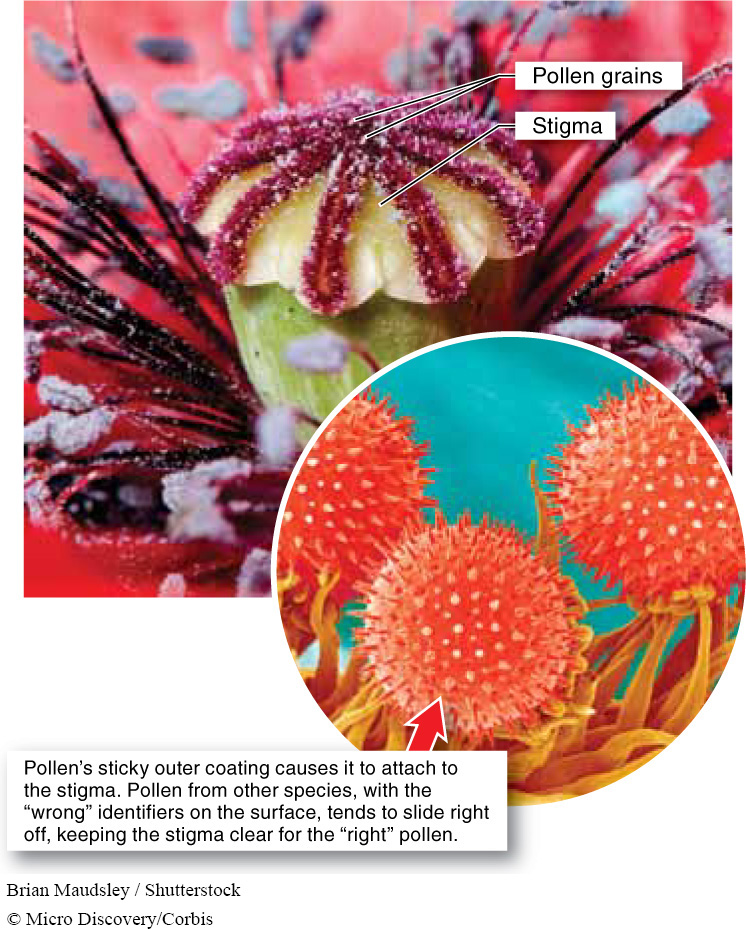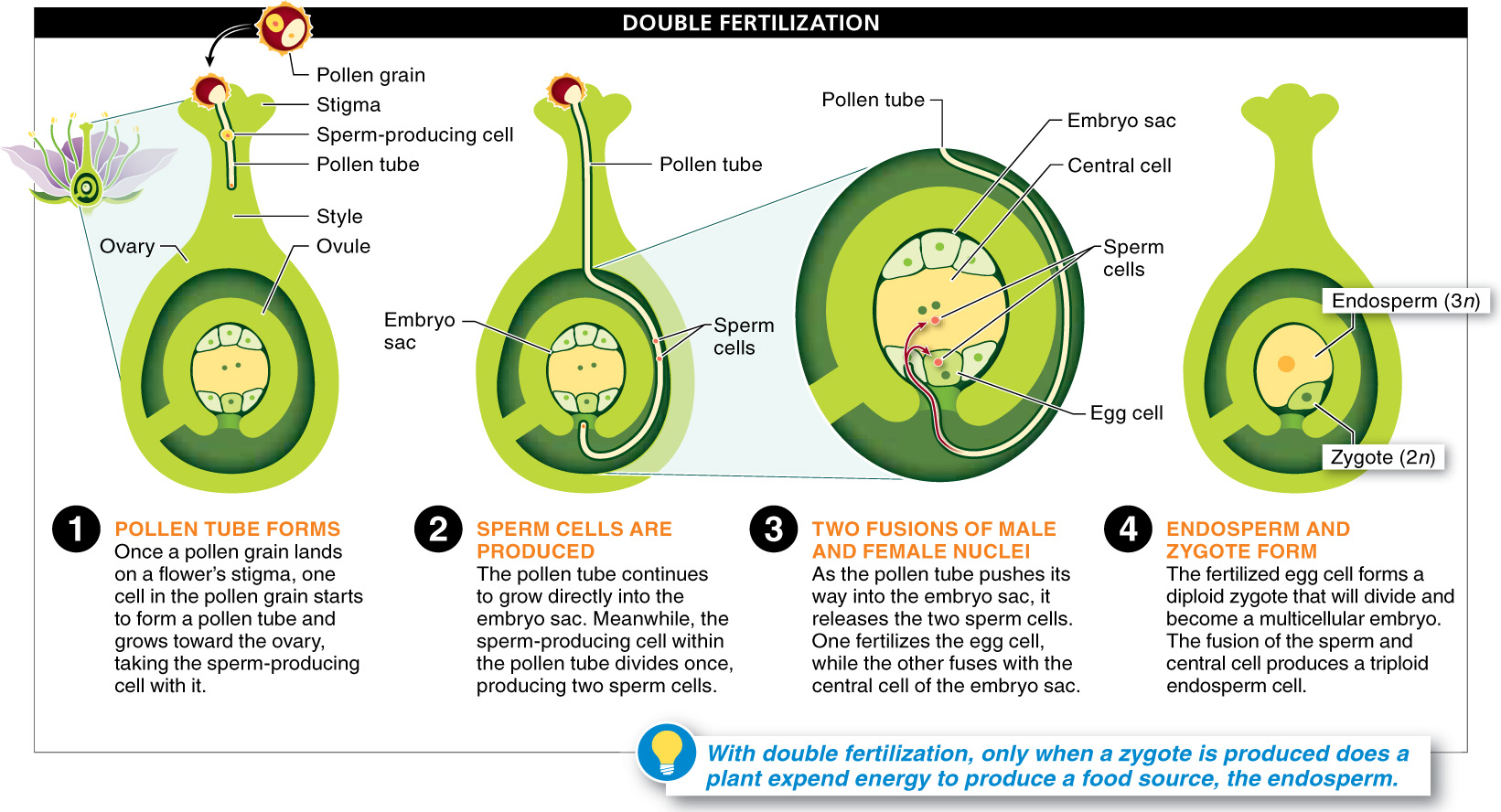18.9: Fertilization occurs after pollination.
Pollination is a bit like sexual intercourse in mammals: it brings the male and female gametes close to each other, but it isn’t quite fertilization. Fertilization requires that the male and female gametes fuse so that their genetic material can be combined. We examine here the male gamete’s last steps on its journey to the female gamete.
Recall that the pollen grain is made from two cells encased in a sticky, spiky wall. When the pollen grain lands on a stigma of a flower of its own species, it sticks to the stigma through interactions between the pollen grain’s outer coating and the cells of the stigma. Pollen grains from other species have the wrong identifiers on the surface and slide off the stigma easily, keeping it open to the “right” pollen grains (FIGURE 18-19).

Figure 18.19: Built to stick. Pollen grains adhere to the stigma of a flower.
Within 12–36 hours of the pollen landing on a stigma, one cell in the pollen grain starts to grow into a pollen tube. This growth does not occur through cell division but by an elongation of the tube cell, which stretches itself and pushes the sperm-producing cell through the stigma, down through the style of the carpel (the female reproductive structure), closer and closer to the ovary. This growth isn’t an easy stroll down the style, however. It’s more like running a gauntlet. The cells within the style test whether the tube cell is too closely related to the plant on which the pollen landed (as it would be if the plant self-pollinated). If the tube cell is too closely related, it is killed—often by a chemical reaction that breaks down the cytoskeleton of the pollen tube. If it is not too closely related, the pollen tube is allowed to continue growing toward the ovary.
If the pollen tube survives its journey down the style and into the ovule, it grows right into the embryo sac (FIGURE 18-20). Meanwhile, the sperm-producing cell within the pollen tube divides once, producing two sperm cells. As the pollen tube pushes its way into the embryo sac, it releases the two sperm cells, and one of them fertilizes the egg cell inside the embryo sac. When the sperm and egg fuse in fertilization, a diploid cell called the zygote results. The zygote will develop by mitosis into the new diploid plant.

Figure 18.20: Fertilization in the flowering plants. In the process of double fertilization, there are two fusions of male and female nuclei: one produces the plant embryo and the other produces the endosperm.
What happens with the other sperm cell? This cell fuses with the central cell of the embryo sac, which, as we learned earlier, has two haploid nuclei. This second fusion produces a triploid cell with three sets of genes. The triploid cell is called the endosperm. As the embryo starts to grow and divide, so, too, does the endosperm. It continues to do so at a high rate, turning into nutritional tissue that nourishes the developing embryo.
Because, in this fertilization, there are two separate fusions of male nuclei with female nuclei—one producing the embryo and the other producing the endosperm—the whole process is called double fertilization. This process, which is unique to flowering plants, is an efficient system because, whenever an embryo is produced, so, too, is a ready-made food source. A large proportion of the calories we ingest when we eat plants comes from endosperm, including rice, the flour we eat as pasta and bread, and the sweet material in corn on the cob.
Q
Question
18.3
What part of the plant supplies the majority of calories to humans?
TAKE-HOME MESSAGE 18.9
Pollination is necessary but not sufficient for achieving fertilization. Following pollination, a pollen tube must grow down the style and into the ovule, during which time the sperm-producing cell divides once to form two sperm cells. Released into the embryo sac, one sperm cell fertilizes the egg cell to form the zygote and the other fuses with the central cell, which contains two haploid nuclei, to form the endosperm, the tissue that will nourish the developing embryo.
What is the benefit of cells of a flower's style destroying the tube cell of a closely related pollen grain?

